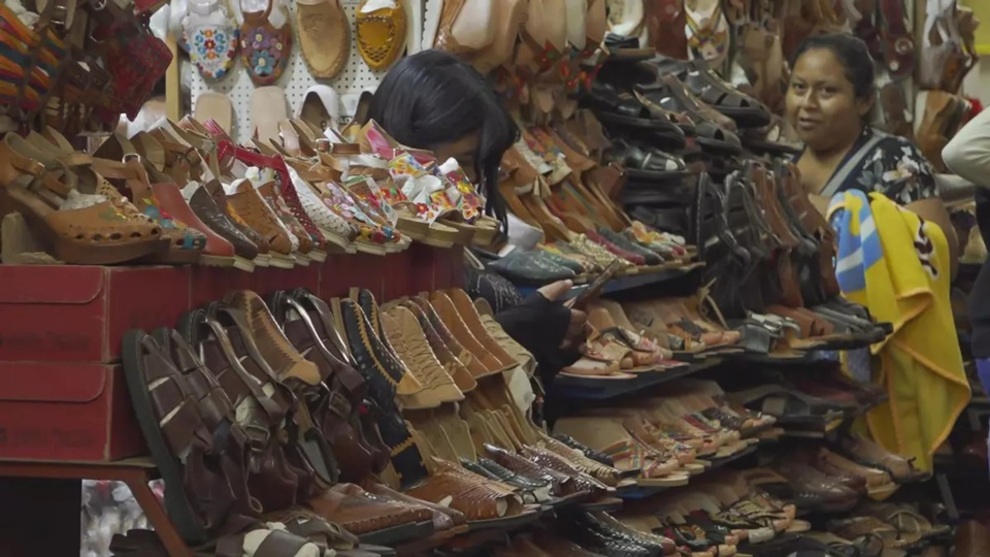From Oaxaca to Peru, Artisans Demand Respect After Adidas’ Apology

In a Zapotec town high in Oaxaca’s Sierra Norte, global sportswear executives found themselves face-to-face with artisans whose craft had sparked an international uproar. Adidas had come to apologize for a sandal that mirrored Indigenous huaraches—and left behind a larger debate about restitution, cultural credit, and the future of traditional economies from Mexico to the Andes.
A village, a brand, and a line crossed
Beneath a tin roof in Villa Hidalgo Yalálag, Adidas representatives met the makers whose heritage had been borrowed. The “Oaxaca Slip-On”—a sleek, black sandal launched with Mexican American designer Willy Chavarría—echoed the woven leather patterns of traditional huaraches, a design rooted in generations of Indigenous craft.
“The Oaxaca Slip-On was conceived taking inspiration from a design originating in the state of Oaxaca, typical of the tradition of the town of Villa Hidalgo Yalálag,” admitted Adidas Mexico’s legal head, adding: “We understand this situation may have caused discomfort, for which we offer a public apology.” The words were formal, but their setting was not. Residents listened in workshops still fragrant with tanned leather, where braiding remains both livelihood and legacy.
The company promised respectful dialogue in the future. Yet many in Oaxaca asked for more than contrition. They sought assurances that a design conceived by their hands would not be lifted, repackaged, and sold globally without credit or compensation.
What “restitution” looks like on the ground
The controversy drew swift political fire. President Claudia Sheinbaum accused Adidas of exploiting Indigenous culture, vowing to strengthen protections against the copying of traditional designs. “It’s collective intellectual property,” she insisted. “There must be compensation.”
Mexico’s cultural ministry echoed that stance. Officials said Adidas had already contacted them to discuss “restitution to the people who were plagiarized.” Oaxaca’s governor went further, reminding the company that “culture isn’t sold, it’s respected.”
In the state’s markets, the reaction was more visceral. Vendors dismissed the Slip-On as a “cheap copy,” pointing out that a real huarache requires time, skill, and knowledge passed down through families. Those distinctions are more than aesthetic—they are economic. Handicrafts sustain hundreds of thousands across Mexico, forming a vital share of GDP in states like Oaxaca. For artisans, restitution cannot be a single payment or photo-op. It must mean visibility, co-ownership, and steady revenue streams that help keep workshops alive and apprentices at the bench.
Between inspiration and appropriation
For Chavarría, the designer who collaborated with Adidas, the backlash carried personal weight. He expressed regret that the shoe “was not developed in direct and meaningful partnership with the Oaxacan community,” saying the intention had been to honor Oaxaca’s spirit but conceding that the effort “fell short of the respect” its people deserve.
Adidas, too, pledged to value Indigenous heritage and begin a dialogue with local authorities. But the larger lesson extends beyond one product. Zara, Anthropologie, and other global brands have all been accused of copying Mexican designs. The repetition reveals a systemic blind spot: how the fashion industry translates “inspiration” into commerce without respecting the communities that embody it.
Mexico is now tightening rules to guard collective intellectual property while still allowing artists to collaborate with companies that have global reach. The balance is delicate: protect communities from extraction while ensuring they can choose partnerships with proper contracts, credit, and shared profits. Without that, “inspiration” easily slips into appropriation.

EFE
Toward a fairer marketplace
The question now is how a multinational turns apology into action. Real remedies begin with co-design, licensed use, and revenue-sharing that names communities as authors, not just reference points. Adidas pledged to collaborate with Yalálag in “respectful dialogue that honors their cultural legacy.” Oaxaca’s Ministry of Culture called the apology “historic.” Still, even officials stressed that recognition must be measured in outcomes: joint collections, labels that identify origin, funds for apprenticeships, traceable sourcing, and contracts written in Zapotec and Spanish.
The scandal also underscored a more complicated truth: many “homage” products are mass-produced in distant factories. Reports that the Oaxaca Slip-On was manufactured in China only deepened outrage. If brands want credibility, they must confront the supply chains that undercut artisans with cheaper, lookalike versions while claiming to celebrate their artistry.
Change is possible. Companies can adopt Indigenous cultural protocols, require transparent consent processes, and accept oversight from cultural institutions. In Yalálag, respect is practical: it means showing up at the workshop, not just the boardroom; signing agreements that guarantee credit and income; and ensuring that when a braided pattern appears on sneakers in New York or Paris, the artisans who perfected it in Oaxaca are partners, not footnotes.
For now, the huaraches still line market stalls in earthy browns and reds, supple from touch, shaped by generations. The uproar around the Slip-On turned a local shoe into a global case study. It also offered a map forward: show up, listen, credit, co-create, share.
Also Read: Mexican-Inspired Churn Keeps Taco Bell Winning While Rivals Stall Hard
As one vendor said, watching tourists pause to admire the craft that has always been there: the artistry is the point. Without it, everyone loses. And in a world suddenly listening, the village that keeps that artistry alive is ready to be heard.

